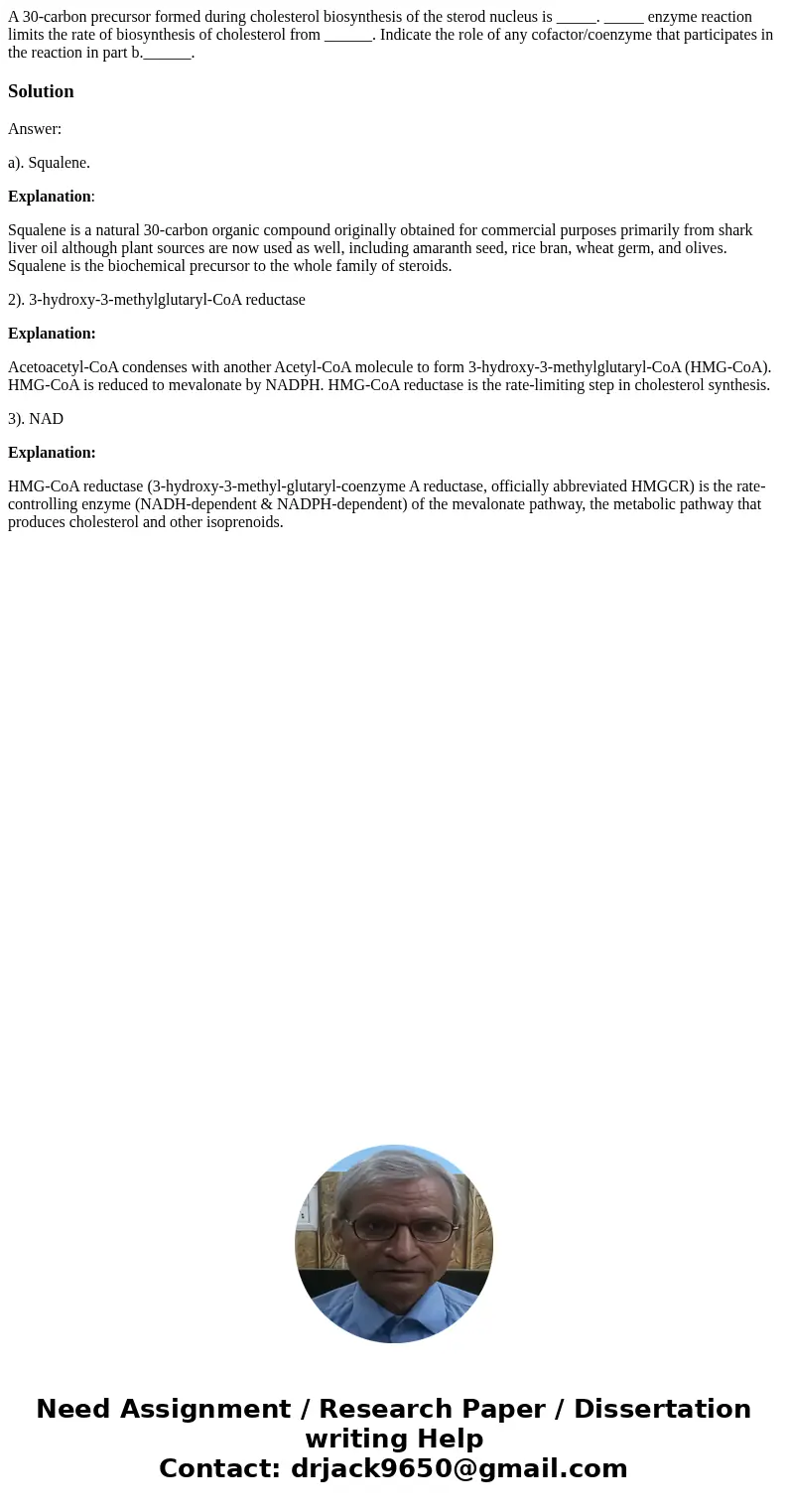A 30carbon precursor formed during cholesterol biosynthesis
Solution
Answer:
a). Squalene.
Explanation:
Squalene is a natural 30-carbon organic compound originally obtained for commercial purposes primarily from shark liver oil although plant sources are now used as well, including amaranth seed, rice bran, wheat germ, and olives. Squalene is the biochemical precursor to the whole family of steroids.
2). 3-hydroxy-3-methylglutaryl-CoA reductase
Explanation:
Acetoacetyl-CoA condenses with another Acetyl-CoA molecule to form 3-hydroxy-3-methylglutaryl-CoA (HMG-CoA). HMG-CoA is reduced to mevalonate by NADPH. HMG-CoA reductase is the rate-limiting step in cholesterol synthesis.
3). NAD
Explanation:
HMG-CoA reductase (3-hydroxy-3-methyl-glutaryl-coenzyme A reductase, officially abbreviated HMGCR) is the rate-controlling enzyme (NADH-dependent & NADPH-dependent) of the mevalonate pathway, the metabolic pathway that produces cholesterol and other isoprenoids.

 Homework Sourse
Homework Sourse